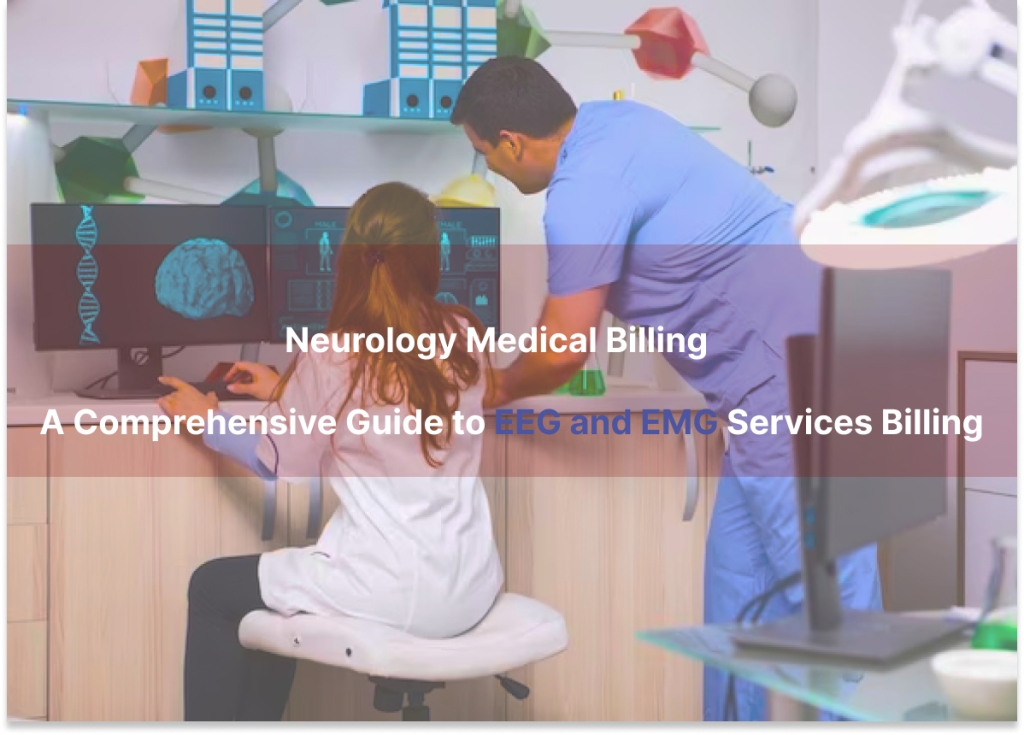
If you’re a neurology practitioner, you understand the critical role that electroencephalograms (EEGs) and electromyograms (EMGs) play in diagnosing and monitoring neurological conditions. However, ensuring proper neurology medical billing for these services can be a complex process.
In this competitive healthcare landscape, it’s crucial to maximize your revenue while maintaining compliance. This guide will provide you with a detailed roadmap for billing EEG and EMG services, including the right codes, documentation requirements, and how a medical billing company can assist you.
Understanding EEG and EMG Services
EEG (Electroencephalogram)
An EEG measures electrical activity in the brain, helping diagnose conditions like epilepsy, sleep disorders, and brain injuries. Proper billing begins with accurate coding.
EEG CPT Codes:
- 95816: EEG, up to 1 hour of recording
- 95819: EEG, extended monitoring, up to 24 hours
EMG (Electromyogram)
EMG tests focus on muscle and nerve activity, aiding in the diagnosis of neuromuscular diseases and injuries. Precise coding is crucial.
EMG CPT Codes:
- 95885: Needle EMG, one extremity with or without related paraspinal areas
- 95886: Needle EMG, two extremities with or without related paraspinal areas
- 95887: Needle EMG, three extremities with or without related paraspinal areas
Documenting EEG and EMG Services
Accurate documentation is key to successful billing. Each service must be supported by detailed records, including:
- Patient Information: Ensure all patient demographics, including name, date of birth, and insurance information, are up to date and correctly recorded.
- Medical Necessity: Clearly document the medical necessity for the EEG or EMG test in the patient’s medical record. Include symptoms, signs, and relevant history.
- Provider’s Notes: Record your findings, interpretations, and impressions during the test. Be specific and detailed in your descriptions.
- Duration: For EEGs, document the start and end times of the test. For EMGs, record the number of extremities tested.
- Equipment Used: Mention the equipment used during the test, such as the type of EEG electrodes or EMG needles.
- Technician’s Details: Include the name and credentials of the technician who administered the test.
- Consent: Ensure informed consent is obtained and documented in the patient’s file.
Billing for EEG and EMG Services
Now that you have accurate documentation in place, it’s time to submit your claims. Follow these steps:
- Code Selection: Use the appropriate CPT codes for EEG and EMG services based on the specifics of the test conducted.
- Modifier Usage: Apply modifiers when necessary. For example, use modifier -52 for reduced services or -59 for distinct procedural services.
- Place of Service: Indicate the location where the services were performed. Common codes include ’11’ for the office, ’21’ for inpatient hospital, and ’22’ for outpatient hospital.
- Diagnosis Codes: Select the appropriate ICD-10 diagnosis codes that support the medical necessity of the EEG or EMG test.
- Insurance Verification: Confirm the patient’s insurance coverage and obtain any necessary authorizations.
- Timely Filing: Submit claims within the insurer’s specified timeframe to avoid denials.
- Rejections and Appeals: Monitor your claims for rejections and respond promptly with accurate documentation when needed.
How a Medical Billing Company Can Help
In the competitive world of healthcare, outsourcing your medical billing to a professional medical billing company can be a game-changer. Here’s how they can assist you:
1. Expertise and Compliance
Medical billing companies specialize in navigating complex billing regulations. They ensure your claims are compliant with the latest coding and documentation requirements.
2. Increased Efficiency
Outsourcing frees up your time and resources to focus on patient care. Billing experts handle the administrative workload, reducing errors and improving revenue flow.
3. Revenue Optimization
Medical billing companies have the experience to maximize your revenue potential by minimizing claim denials and rejections.
4. Cost Reduction
By outsourcing, you save on the costs associated with in-house billing staff, training, and software maintenance.
In Conclusion
Billing for EEG and EMG services in neurology requires precision and adherence to coding and documentation guidelines. In the competitive healthcare landscape, optimizing revenue while maintaining compliance is paramount. Whether you choose to handle billing in-house or collaborate with a medical billing company, the key is to stay informed, document thoroughly, and use the correct codes. By following this comprehensive guide, you can navigate the complexities of EEG and EMG services billing successfully and ensure your neurology practice thrives in today’s competitive market.
Leave a comment